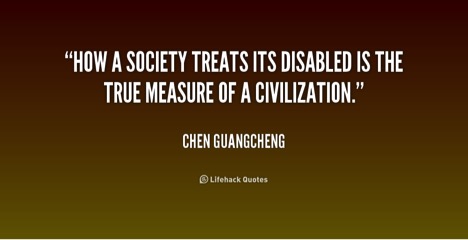You say you want a diverse workplace. But what does that really mean? Will you employ a receptionist in a wheelchair? Promote to management someone with a speech impediment? Modify job duties for an individual with limited mobility?
Canadian employers are now, more than ever, focused on attracting and retaining a diverse workforce. So, begs the question, why are so many individuals with disabilities who want to work still facing external barriers?
- Of working aged Canadians (aged 25 to 64), only half of those with disabilities are employed, compared with 79% for those without disabilities.
- University graduates with a disability are less likely to hold a management position and in general, earn less than those without a disability, especially among men.
- Of the many Canadians with a disability who are applying for jobs, 12% reported having been refused a job in the previous five years because their disability.
- Although this seems obvious, some recruiters are not aware: It is illegal to refuse a job to an individual because of their disability, whether physical or mental**
Of course, many individuals with disabilities are unable to work due to the severity of their disability, and some positions may have bona fide occupational requirements which justifiably and reasonably limit who can perform the job. However, this doesn’t explain why there is a high percentage of individuals with disabilities who would like to and are able to work, yet remain unemployed.
As HR Professionals, we must identify the role we play in these external forces, including workplace inaccessibility, discriminatory recruiting practices and narrow mindsets.
Below are some proactive steps that we as HR Professionals can and should take to increase the employment opportunities for those in our community who live with a disability.
- Recruit for talent, embracing diversity. “The worst thing about a disability is that people see it before they see you” – Easter Seals Alberta. A vital skill for recruiters and managers is that of seeing beyond a disability to identify abilities, strengths and traits. Part of this includes ensuring individuals of all walks of life have access to job openings, for example advertising on non-profit websites such as The Talent Pool, partnering with local Disability Employment Services including Deaf & Hear Alberta and Prospect, and ensuring accessibility to the interview site. The value added to your team through a wide range of abilities (physical and mental) is invaluable, and training your recruiters in this, as well as adapting your recruitment strategy will have great rewards.
- Take action to care for employees who become disabled. Managing disabilities in the workplace is not always easy, and although managers have great intentions they often have poor resources. We have developed a comprehensive Disability Management Guide for this purpose – to equip managers with an understanding of disability management and the tools to support employees to return to work quickly. “The goal is to minimize the impact of an illness or injury by focusing on returning the employee to safe and productive work as soon as it is medically possible. Returning to daily work and life activities can actually help an employee’s recovery and reduce the chance of long-term disability.” – Snippet from our Disability Management Guide.
- Train your staff. Communicating your organization’s values around diversity, firstly to the management team, then to the wider organization, is important in achieving buy-in and a company-wide commitment. Providing supervisors and managers with a customized Disability Management Guide will equip them in understanding and implementing case management, accommodation, modification of work duties and Return to Work programs. An added bonus for organizations required to have Workers Compensation Coverage is the ability to reduce the premiums you pay through implementing Modified Work Programs for injured or disabled employees.***
According to civil rights activist, Chen Guangchen, “How a society treats its disabled is a true measure of civilization.” Likewise, the true test of an organization’s values, recruitment practices and accommodation procedures is in its embrace of those with abilities, whether they are disabled or not.
* Facts from Statistics Canada (http://www.statcan.gc.ca/pub/75-006-x/2014001/article/14115-eng.htm)
** From Canada Human Rights Commission (http://www.chrc-ccdp.ca/eng/content/what-discrimination)
*** Workers Compensation Board (http://www.wcb.ab.ca/employers/discounts.asp)

